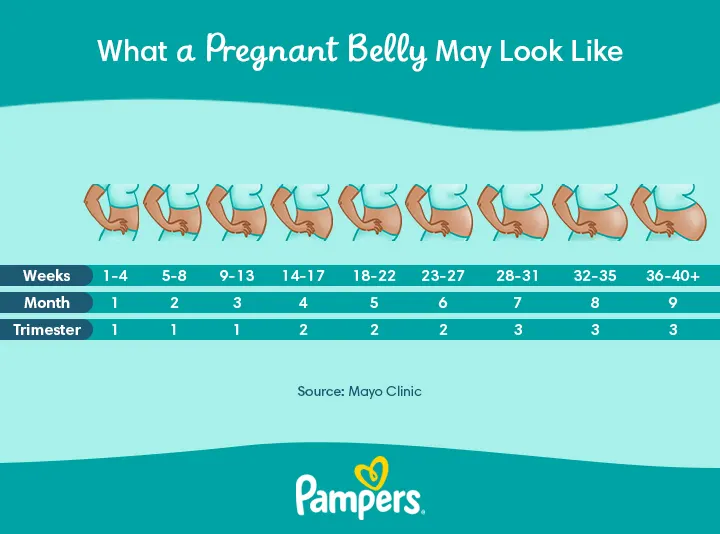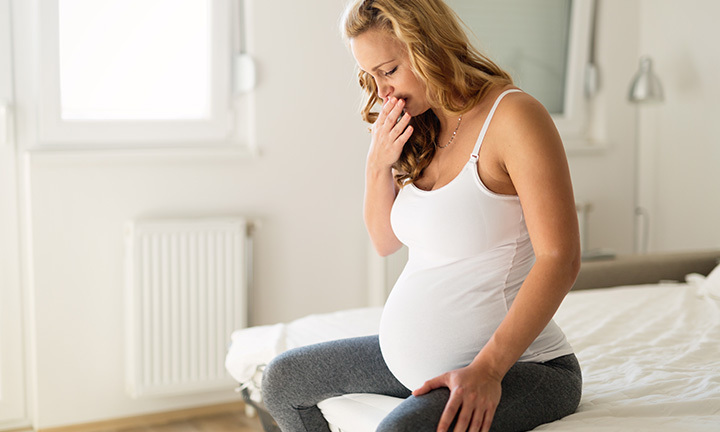
How Far Along Am I in My Pregnancy?
If you've just found out you're pregnant, one of the first questions you'll have is: How far along am I? Beyond knowing that all-important due date, knowing how many weeks pregnant you are will help you better track all those exciting pregnancy milestones along the way.
How Can I Calculate How Far Along I Am and My Due Date?
If you know the date of the first day of your last menstrual period or the date of conception, the easiest way to get an estimate of your due date and how many weeks pregnant you are is using the Pampers due date calculator. Although we explain how to figure out your due date using the methods below, our due date calculator does all the counting for you.
RELATED PREGNANCY TOOL
There are several different ways to figure out how far along you are:
When figuring out how far along you are, keep in mind that although your pregnancy is calculated from the first day of your last menstrual period, for the first few weeks you weren't actually pregnant yet. Here's why: You would have ovulated approximately 14 days after the first day of your last period, then the egg would have been fertilised within about 24 hours, and then about 5 or 6 days after ovulation the fertilised egg implanted into the lining of the uterus, and this is when you are actually pregnant.
Can My Due Date Change?
Due dates are typically calculated as 40 weeks (280 days) from the first day of your last period. But this is just an estimate; most babies aren't born exactly on their due date. Most mums-to-be give birth between 37 to 42 weeks of pregnancy. During your prenatal check-ups, your doctor will also monitor how far along you are and they may give you a slightly different due date than the one you calculated.
What’s in Store for Me Until My Due Date?
Now that you know how far along you are, it might be helpful to know that pregnancies are often referred to in weeks and trimesters. Take a look at this pregnancy timeline for a breakdown of the weeks, months, and trimesters of pregnancy:
Here are some of the things you can expect in each trimester:
First trimester (0-13 weeks): You might notice some early signs of pregnancy, such as morning sickness and food cravings. Make an appointment with your doctor or midwife to set up your prenatal visits to make sure you and your baby stay healthy and safe.
Second trimester (14-27 weeks): This trimester is often referred to as the honeymoon period of pregnancy. You may experience a burst of extra energy. Use it to get things done, like baby-proofing your home, going to prenatal classes or doing some gentle pregnancy exercise.
Third trimester (28-42 weeks): You're nearly there! As you get closer to the birth of your baby, get prepared by making sure you have all the essential baby gear you'll need but don't overdo it − slow down and rest whenever you can.
FAQS AT A GLANCE
Count the weeks from the first day of your last menstrual period, or simply use the Pampers due date calculator to find out how far along you are.
Now that you've learned how to calculate how far along you are, you may be wondering how to announce your pregnancy to your partner or you might be keen to start finding the right name for our baby. Congratulations on starting a new and exciting journey! We're here with you every step of the way.
- NHS.uk: You and your pregnancy at 1 to 3 weeks
- NHSinform.scot: 40 weeks plus
- NHS.uk: 12-week pregnancy dating scan
- NHS.uk: Pregnancy due date calculator
- NHS.uk: Start 4 Life: Week-by-week guide to pregnancy
- NHS.uk: You and your baby at 7 weeks pregnant
- NHS.uk: Start 4 Life: Week 5 – your 1st trimester
- NHS.uk: Start 4 Life: Week 11 – your first trimester
- NHS.uk: Start 4 Life: Week 14 – your second trimester
- NHS.uk: Start 4 Life: Week 14 – your second trimesterδ
- NHSinform.scot: 4-8 weeks
Read more about Pregnancy
Related Articles
Join Pampers Club and get:












